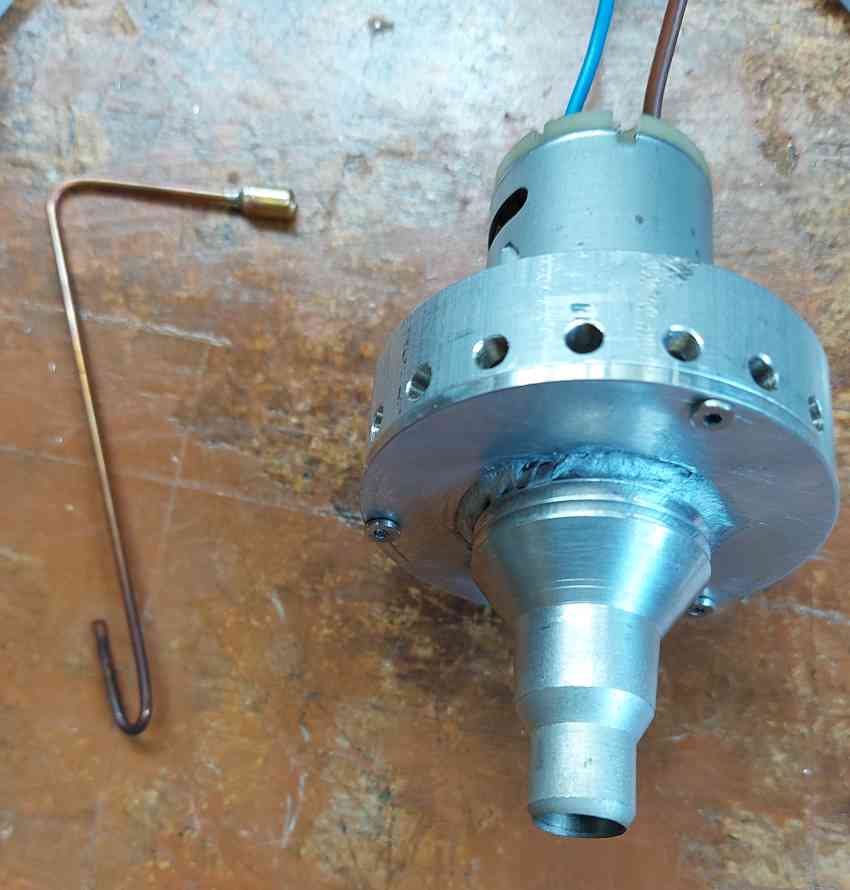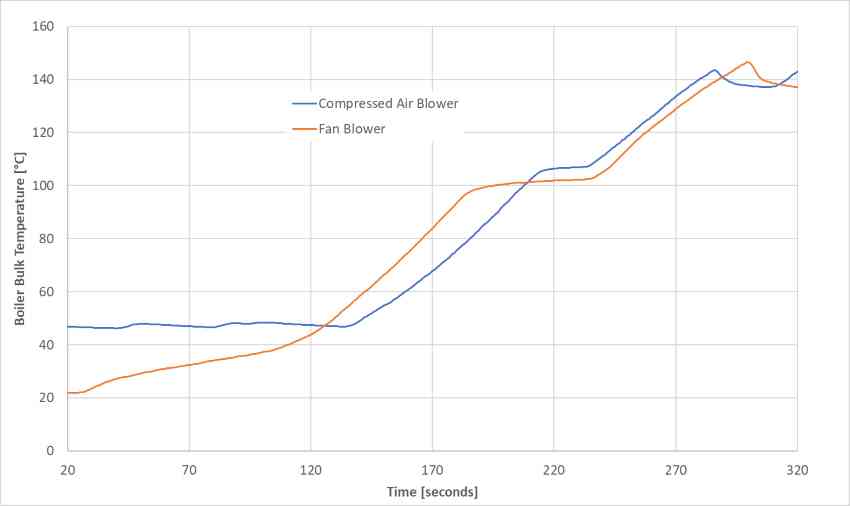glue-itcom
Well-Known Member
- Joined
- Apr 10, 2013
- Messages
- 216
- Reaction score
- 300
I made an electric fan with a homemade aluminium centrifugal fan blade. I then made a simple u-bend hockey-stick pipe and fed compressed air into it.
I compared both of these methods for raising steam in my small vertical boiler.

on the left is the compressed air hockey-stick pipe (drops into the chimney from the top) and the fan that sits on top of the chimney
I measured the bulk water temperature in the boiler and both methods are very close in terms of rate of increase in temperature.

In the chart you can see the initial rate of climb in temperature before the blower is switched on. In the mid-section, around 180 to 230 seconds, I turned both blowers off momentarily before then switching them back on. Note that the electric fan was removed from the chimney when it was turned off. Both blowers were switched off when the temperature got above 140°C as this is then close to the 50psi safety valve limit.
I compared both of these methods for raising steam in my small vertical boiler.

on the left is the compressed air hockey-stick pipe (drops into the chimney from the top) and the fan that sits on top of the chimney
I measured the bulk water temperature in the boiler and both methods are very close in terms of rate of increase in temperature.

In the chart you can see the initial rate of climb in temperature before the blower is switched on. In the mid-section, around 180 to 230 seconds, I turned both blowers off momentarily before then switching them back on. Note that the electric fan was removed from the chimney when it was turned off. Both blowers were switched off when the temperature got above 140°C as this is then close to the 50psi safety valve limit.






























































